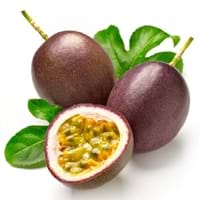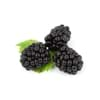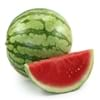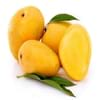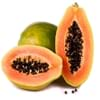Health Benefits
Arthritis treatment, Cancer prevention, Increases metabolic rate, Kidney stone treatment, Lower blood pressure, Prevents constipation, Prevents diabetes, Strengthening of bones, Ulcer treatment, Weight loss properties
Asthma treatment, Heart care, Regulates Blood Sugar, Muscle pain relief, Reduces nervous tension
General Benefits
Boosts immune system, Controls blood pressure, Digestive aid, Improves eye vision, Maintains healthy cholesterol level
Boosts immune system, Controls blood pressure, Digestive aid, Fights against infections, Helps in weight loss
Skin Benefits
Anti-aging benefits, Brightens and lightens complexion, Hydrates skin, Skin rejuvenation, Treatment of acne, Treatment of dark spots
Anti-aging benefits, Skin revitalization
Hair Benefits
Good conditioner, Prevents hair loss, Regulates hair growth, Treatment of dandruff
Protects hair
Allergy Symptoms
Abdominal pains, Breathing difficulty, Coughing, Diarrhea, Drop in blood pressure, Fainting, Runny nose, Skin rash, Sneezing, Swelling of mouth, tongue or lips, Vomiting
Anaphylaxis, Breathing difficulty, Decrease in blood pressure, Dizziness, Skin rash, Swelling of face, Swelling of mouth, tongue or lips
Side Effects
Abdominal cramps, Diarrhoea, Weight gain
Stressed heart, Nausea, Vomiting, Possibly unsafe during pregnancy
Best Time to Eat
As a snack in the late afternoon, Don't consume at night and before bed, Eat the fresh ones, avoid mixing with any other foods, don't eat after meal., Morning time (before lunch), Strictly avoid empty stomach
As a snack in the late afternoon, Don't consume at night and before bed, Morning time (before lunch), Strictly avoid empty stomach
Vitamin B5 (Pantothenic Acid)
Not Available
Vitamin C (Ascorbic Acid)
Vitamin K (Phyllochinone)
Calories in Fresh Fruit with Peel
Not Available
Calories in Fresh Fruit without Peel
Calories in Frozen Form
Not Available
Season
Winter
All seasons
Varieties
Sweet Orange - Persian orange, Navel orange, Valencia orange and Blood orange. Sour Orange - Seville orange, Bergamot orange, Chinotto orange and Daidai.
Australian Purple, Common Purple, Kapoho Selection, Pratt Hybrid, University Selection No. B-74, Waimanalo Selection and Yee Selection
Color
Orange
Purple, Yellow
Inside Color
Orange
Yellow
Taste
Sweet-Sour
Sweet, Tart
Origin
South-Eastern Asia
Argentina, Brazil, Paraguay
Grows on
Trees
Not Available
Soil Type
Loam, Sandy loam
Sandy loam
Climatic Conditions
Hot
Frost free, Sunny, Warm
Facts about
- There are around 600 varieties of oranges available worldwide.
- More than 1 plant can grow from a single orange seed.
- Orange and orange blossoms are a symbol of love.
- Orange tree is usually propagated by grafting.
- Passion fruit tree can grow up to 20 feet in a year.
- More than 200 species of passion fruit are found near Amazon river.
- Oil extracted from its seeds is used in various cosmetics.
Top Producer
Brazil
Brazil
Other Countries
China, Egypt, India, Italy, Mexico, South Africa, Spain, Turkey, United States of America
Colombia, Ecuador, Indonesia, Kenya, Peru
Top Importer
Germany
Brazil
Top Exporter
Spain
Ecuador
Botanical Name
Citrus sinensis
Passiflora edulis
Synonym
Citrus aurantium L. var. dulcis
Passiflora edulis f. edulis or Passiflora edulis f. flavicarpa
Subkingdom
Tracheobionta
Tracheobionta
Division
Magnoliophyta
Magnoliophyta
Class
Magnoliopsida
Magnoliopsida
Subclass
Rosidae
Dillenhidae
Order
Sapindales
Malpighiales
Family
Rutaceae
Passifloraceae
Species
C. × sinensis
P. edulis
Generic Group
Citrus fruit
Passion Flower
Difference Between Orange and Passionfruit
We might think that Orange and Passionfruit are similar with respect to nutritional value and health benefits. But the nutrient content of both fruits is different. Orange and Passionfruit Facts such as their taste, shape, color, and size are also distinct. The difference between Orange and Passionfruit is explained here.
The amount of calories in 100 gm of fresh Orange and Passionfruit with peel is 63.00 kcal and Not Available and the amount of calories without peel is 47.00 kcal and 97.00 kcal respectively. Thus, Orange and Passionfruit belong to and category.These fruits might or might not differ with respect to their scientific classification. The order of Orange and Passionfruit is Sapindales and Malpighiales respectively. Orange belongs to Rutaceae family and Passionfruit belongs to Passifloraceae family. Orange belongs to Citrus genus of C. × sinensis species and Passionfruit belongs to Passiflora genus of P. edulis species. Beings plants, both fruits belong to Plantae Kingdom.

